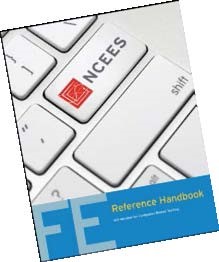Dr. Z’s Corner (201709)
Please Welcome Our New Contributors: Dr. Bryan Higgs & Dr. Lei Wang

I am very excited to welcome our readers to the beginning of a new school year. Quite often we get emails from our readers, students, educators and engineers about Dr. Z’s Corner and learn what they think about our articles and problems. We are pleased to report that our readers are benefitting from our work and it feels great to make a difference.
(Photo: From Left: Dr Lei Wang, Dr Z, Dr Bryan Higgs)
I would also like to remind our readers that Dr. Z’s Corner is a public service and everything we do is pro-bono! We are proud to be part of ASCE-NCS and to provide free help to the engineering community not only in the Washington metro area, but also around the nation and the globe.
Again I would like to take this opportunity to thank my great editor James Palmer, President Jordan Pitt and board of directors of the ASCE-NCS for their dedication to the engineering community. We appreciate all their hard work.
For us, September 1st is a new start with the opportunity to focus, refresh, and rethink the priorities and work hard to get ready for licensure. And remember, standards matter, character counts, and now more than ever, your PE can be the competitive edge you need.
Let me remind our readers one more time: to conquer the FE and PE exams, you definitely need good time management skills that can make all the difference in keeping track and staying on top of things. You may be ambitious, but being realistic will definitely help you achieve your goals and allow you to be not only successful but also happy, and less stressed out about your achievements.
I consider myself very fortunate to have great team members that are extremely passionate, enthusiastic, and very knowledgeable in their areas of expertise.
For the last three years, my colleague and good friend Dr Vagelis Plevris from Oslo, Norway, has been tirelessly helping me on everything, including preparing and solving problems using his software BEAM-2D. And now are we ready for the big announcement: I’m delighted to announce that effective September 2017; Dr. Z’s Corner will have two new world-class engineers and contributors joining our team and helping us in the Transportation and Geotechnical areas. Please join me to welcome Dr. Lei Wang from Clemson University and Dr. Bryan Higgs from Virginia Tech. Currently both of them are full-time faculty members at UDC Civil Engineering Department. Please review their problems and here are their brief bios:
Dr Bryan Higgs
Dr Bryan Higgs recently moved to Washington, DC area to join UDC. All his degrees are from Virginia Tech, including his PhD in Transportation Engineering. Prior to this position, he was an Intelligence Community Postdoctoral Research Fellow at the University of Memphis.
Bryan’s research and teaching interests range from network design to human factors in transportation including: multi-level multi-objective game theory, network vulnerability, network optimization, psychophysiological driver behavior, driving simulators, road rage, aggressive driving behavior, and traffic flow theory.
Dr. Higgs has published in top-tier journals, and is a member of several national professional organizations. In addition to his national and international service, he enjoys participating in outreach activities for fostering interest in transportation in middle and high school students.
Please read Dr. Higg’s “Career Highlights” and solve his transportation problems in this month’s Dr. Z’s Corner, problems section (Editor’s Note: All Dr Z’s Corner Problem sets are available on the ASCE-NCS Website: Dr Z’s Corner).
Dr Lei Wang, PE
Dr Wang has recently moved to Washington, DC area to join UDC. He received his PhD degree in Civil Engineering with a geotechnical emphasis from Clemson University in 2013. His BS degree is also in Civil Engineering from China University of Geosciences conferred in 2008 and his MS degree in Geotechnical Engineering from Tongji University completed in 2010. Prior to his current position, he worked as a Post-Doctoral Fellow at Clemson University as a Geotechnical Engineer at Geotechnical and Tunneling Technical Excellence Center of WSP/ Parsons Brinckerhoff and as an Assistant Professor of Civil Engineering at Montana Tech of the University of Montana.
Dr Wang has an extensive research and practical experience in geotechnical engineering, including underground excavation and tunneling, soil/rockstructure interaction, numerical and centrifuge modeling, earth dams and levees, foundation engineering, and geotechnical earthquake engineering. He has published over 40 refereed journal and conference papers with a Google Scholar Citation of over 400. He was a recipient of many honors and awards, including the Best Paper Award by Taiwan Geotechnical Society (2013) and the Outstanding Graduate Researcher Award at Clemson University (2013). He is a Professional Engineer registered in California.
Finally we have to remind our readers that FE and PE are very fast-paced exams and you will have little time to look up information. Therefore, make sure you are familiar with your reference material and begin with the subject areas you know best. This will give you more time and build your confidence.
And most importantly, stay relaxed and confident. Always keep a good attitude and remind yourself that you are going to do your best!
Until next time,
Ahmet Zeytinci, P.E.
Dr. Z. (This email address is being protected from spambots. You need JavaScript enabled to view it.)



